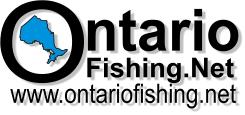On the Contours for Late Summer Walleyes
Consider the types of areas you fish throughout most of the summer. Typically they will be large, slow tapering flats, main lake basins or long points that offer lots of room for walleyes to roam and chase forage. It’s structure that has relatively little in the way of definable breaks or edges. That all changes when walleyes move toward breaks in late summer … and when anglers are slow to adjust to the transition, their success rate drops off dramatically. We’ve seen this scenario many times, and through experience found that the most efficient way to contact the fish in these areas was a tactic we call Contour Trolling. The key to contour trolling is to keep the bait near the bottom. That can be tough when you’re trying to cover multiple depths in a trolling pass. It’s a situation where we have learned to rely on a unique trolling line known as lead core. Lead core line is basically Dacron line filled with lead. The line is color-metered every ten yards, making it easier to keep track of how much line you have out on various trolling passes. While lead core line is most often used for deep trolling applications, when proper boat control is used, it can be deadly in shallow water as well. For Contour Trolling with lead core, start with the “full – lead core” set-up, meaning you’re going fill a large capacity trolling reel with lead core line…no backing. Large capacity trolling reels like the Okuma StrataMaster model 45D Line Counter reel will hold ten colors, which is an entire 100 yard spool of 18# lead core line (the preferred size for walleye trolling applications). Whatever reel you choose, be sure it has large enough capacity to handle at least this much line. At the end of the lead core we’ll tie on a 10 foot leader of 10/4 (10 pound test/4 pound diameter) Berkley FireLine. The FireLine is a great choice, especially in situations where you’re fishing a “dirty” bottom (one littered with leaves, wood and other debris) because it makes the entire system, from reel to lure, no-stretch and very sensitive. By running a set-up like this, it is very easy to monitor how the bait’s are running by watching the rod tips as you troll. The vibration put out by the lure’s action is telegraphed up the line to the rod tip, causing it to vibrate. If the lure happens to pick up a leaf or other piece of gunk (which is a frequent problem when trolling near the bottom), its action will be deadened, and the rod tip will quit vibrating. That tells you to reel in the lure, clean off the debris, and get back to fishing.
One thing that we have determined through the years with lead core trolling is that, more often than not, it works better with smaller crankbaits than it does with larger models. Smaller, shallow running crankbaits seem to “follow” the lead core better (making targeting specific depths more efficient), and they just seem to trigger more bites. This is ideal for baits like the Berkley Flicker Shad in the 4cm, 5cm, 6cm and 7cm sizes. Experiment to find out what lure gets the most attention on that particular day. One problem with using smaller lures is they typically sport small hooks. Now while Flicker Shads sport ideal hook sizes for walleye fishing, many bait’s hooks are just too small. This can lead to more lost fish, as small trebles are more likely to pull free when fighting in good sized fish. One modification we recommend is to change out the hooks of your small cranks and replace them with Mustad Ultra Point Triple Grip Trebles (model 36233) or an even better choice would be the new Mustad KVD Elite Triple Grip Trebles model TG58NP-BN. These new Elite Triple grips are a standard length shaft and wire treble with a wider giving these hooks more “bite” than standard trebles. Don’t get caught in the late summer rut of continuing to fish the wrong spots. When the summer bite begins to fail on your favorite walleye water late this summer, follow the fish to the sharper breaks and contours that harbor walleyes in the later part of the season.
|



 What
makes lead core so effective for this type of contour trolling is that
it is very “speed affected”. Because of the line’s bulk, water
resistance effects how it runs in the water, so if you up your trolling
speed, the lead core gets pushed up and runs shallower. On the other
hand, if you slow down, the weight of the lead core enables it to drop
down and run deeper. Therefore, to cover a 4 to 8 foot depth range for
instance, manipulate the trolling speed depending on what depth you want
the lures to run. Therefore it’s a simple matter of adjusting the
trolling speed as you zigzag your way along the break to cover the
depths effectively. Whatever depths you are fishing, a little
trial-and-error will tell you the right speeds to run to hit the needed
depths.
What
makes lead core so effective for this type of contour trolling is that
it is very “speed affected”. Because of the line’s bulk, water
resistance effects how it runs in the water, so if you up your trolling
speed, the lead core gets pushed up and runs shallower. On the other
hand, if you slow down, the weight of the lead core enables it to drop
down and run deeper. Therefore, to cover a 4 to 8 foot depth range for
instance, manipulate the trolling speed depending on what depth you want
the lures to run. Therefore it’s a simple matter of adjusting the
trolling speed as you zigzag your way along the break to cover the
depths effectively. Whatever depths you are fishing, a little
trial-and-error will tell you the right speeds to run to hit the needed
depths.